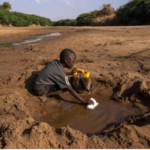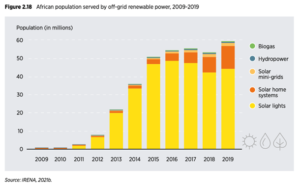Earth is experiencing a period of rapid warming, even as scientists are actively working on approaches to mitigate the effects of climate change. According to studies, one of the most effective approaches to mitigating global temperature is to provide shade to the Earth by blocking a fraction of the Sun’s light. This idea, called a solar shield, has been proposed before, and although it may require a significant amount of weight to balance gravitational forces and counter solar radiation pressure, there is potential for finding innovative and cost-effective materials to make it feasible.
The National Centers for Environmental Information (NCEI) reports that the combined land and ocean temperature has increased at an average rate of 0.14 degrees Fahrenheit ( 0.08 degrees Celsius) per decade since 1880. This increase has caused irreparable damage to the environment, as well as businesses and sectors that depend on it for raw materials and finished products. For example, the agricultural sector faces lower crop yields and nutritional quality decline due to drought, heat waves and flooding. While scientists are making great strides in their efforts to address the situation, this series on global warming carefully identifies the challenges and low-hanging solutions, for the agricultural sector and affected businesses. In this first article, we examine the unique challenges that African agriculture faces due to global warming, and the opportunities for growth and adaptation through innovative solutions and resilient farming practices.
Challenges
Reduced crop yields are happening in many parts of Africa as a result of rising temperatures and shifting rainfall patterns. Heat stress has a significant negative impact on the production of crops including maize, sorghum, millet, and rice, which can lead to food shortages and severe food insecurity. Figure 1 shows countries affected by acute food insecurity in Africa as a result of the challenges facing agriculture.

Figure 1: Acute food insecurity in Africa
Also, global warming is promoting the proliferation of pests and diseases in agricultural systems. Insects like locusts and armyworms, which are already significant threats to crops in Africa, may experience population booms under warmer conditions.
 Figure 2: Pests and diseases
Figure 2: Pests and diseases
To add to these, droughts are already plaguing many parts of Africa, and climate change further exacerbates the problem. Water stress in crops and cattle due to erratic rainfall and protracted dry spells makes irrigation more difficult and reduces agricultural productivity. Land degradation and desertification can be exacerbated by higher temperatures and longer droughts, damaging broad swaths of farmland, and decreasing their arable capacity. Figure 3 shows a case of a short supply of water happening recently in some parts of Africa, especially in rural areas.
 Figure 3: Water scarcity
Figure 3: Water scarcity
Further, changing climate patterns can disrupt traditional planting and harvesting seasons, leading to uncertain crop outcomes and challenges in managing agricultural calendars.
The impacts of global warming on agriculture in Africa can lead to reduced food availability and increased food prices, potentially exacerbating food insecurity and malnutrition among vulnerable populations. Figure 4 shows that many countries in Africa, especially DRC, Ethiopia and Nigeria are not only facing the case of acute food insecurity, but this meets an ever-increasing population challenge.
 Figure 4: Food insecurity
Figure 4: Food insecurity
On a similar note, climate-induced agricultural challenges can trigger rural-to-urban migration as farmers seek alternative livelihoods. This migration can lead to social and economic challenges in urban areas, including increased pressure on infrastructure and services. Again, the availability of wild foods and traditional crops that have been crucial to local communities may be threatened by global warming’s effects on ecosystems and biodiversity. Heat stress is a serious problem for African livestock, especially in arid places where water and shade are scarce. Livestock affected by heat stress have lower milk output, slower weight gain, and poorer reproductive performance.

Figure 5: Biodiversity
Africa’s response to global warming must be multi-pronged and holistic, incorporating both adaptation and mitigation measures. Given the continent’s susceptibility to climate change’s effects, sustainable and climate-resilient practices must be given top priority. First, there is an urgent need for a renewable Energy Transition. The issue of renewable energy transition has been addressed in the July 2023 edition of AR Initiative’s Sustainability Echo. Greenhouse gas emissions can be reduced and fossil fuel use can be decreased if people are encouraged to switch to renewable energy sources like solar, wind, and hydroelectric power. Increasing people’s access to clean, affordable energy can help the economy grow and benefit people’s daily lives.
 Figure 6: Off-grid renewable energy
Figure 6: Off-grid renewable energy
Evidence from the above figure shows that African countries have made significant progress in terms of the use of off-grid renewable power; however, given the current global issues and projected increase in the population of the continent, efforts to make off-grid renewable power a norm in Africa need to be intensified.
Secondly, there should be decisive efforts to improve crop resilience to climate variability and cut down on emissions from agriculture by adopting climate-smart agricultural practices such as conservation farming, agroforestry, and better irrigation methods. In order to combat water scarcity and boost agricultural output, it is important to invest in effective water management technologies, such as rainwater harvesting and water conservation practices. Thirdly, it is possible to reduce atmospheric carbon dioxide levels by supporting afforestation and reforestation projects. Capturing and storing carbon is aided by trees’ ability to take up CO2 during photosynthesis. Carbon sequestration and biodiversity conservation can both benefit from encouraging sustainable land use practices such as limiting deforestation, limiting soil erosion, and safeguarding natural ecosystems. A study conducted by Chiaka and Zhen, published in 2021, shows that there is a large proportion of untapped lands in Africa (See figure below).
 Figure 7: Land use in Africa
Figure 7: Land use in Africa
Source: Chiaka & Zhen (2021).
However, this calls for the development of a more sustainable strategy to ensure that while we tap these lands, issues surrounding soil erosion, deforestation, etc. are considered and avoided.
Further, educating the public on climate change and its effects can encourage people to make positive lifestyle choices and back climate action on local, national, and global scales. Helping farmers and communities adapt to shifting weather patterns requires better climate information and early warning systems. Economic and societal costs associated with extreme weather occurrences can be mitigated by investments in disaster planning and resilience building. Also, implementing energy-efficient technologies and promoting energy conservation practices can reduce energy consumption and associated greenhouse gas emissions. Finally, encouraging the use of public transportation, promoting cycling and walking, and supporting the adoption of electric vehicles can effectively reduce emissions from the transportation sector.
About the Author(s)
Olayide Oyeleke is an associate at The AR Initiative; where Dr Emma Etim is the Head of Research.